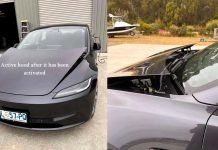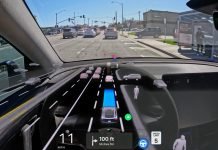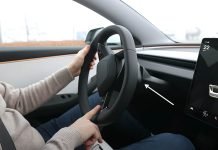The automotive world has been abuzz with the news of Tesla’s “recall,” a term that has sparked debate and confusion among consumers and industry observers alike. Major news outlets, ranging from MotorTrend to Reuters, have reported on this development, often using the traditional term “recall” to describe what is, in essence, a software update. This portrayal has led to a mix of reactions, with some interpreting it as a conventional vehicle recall, while others, more informed about Tesla’s technology, recognize the distinction.
Traditionally, a vehicle recall implies a physical return of the car to the manufacturer or authorized service center for hardware modifications or inspections. However, Tesla’s situation is unique. Their “recall” involves an Over-The-Air (OTA) software update, a process that remotely updates the vehicle’s software without the need for physical alterations.
This modern approach to vehicle maintenance and safety enhancements, enabled by advanced connectivity and software-centric vehicle design, marks a significant departure from traditional automotive industry practices.

Background of the Recall
The National Highway Traffic Safety Administration (NHTSA), a key player in vehicle safety regulation in the United States, has been closely involved in this case. The agency raised specific concerns regarding Tesla’s Autopilot system, particularly focusing on the Autosteer feature. NHTSA’s primary contention revolves around the potential misuse of Autosteer, which could lead to safety issues if the system does not adequately notify drivers of changes in driving conditions or system status.
The timeline of events leading to this recall is pivotal to understanding the context. NHTSA’s investigation into Tesla’s Autopilot-related incidents dates back to August 2021, when they began examining incidents involving stationary emergency vehicles and Tesla cars with engaged Autosteer. This investigation escalated in June 2022, leading to repeated meetings and discussions between Tesla and NHTSA. These interactions culminated in the decision to implement the OTA update, addressing the concerns identified during the investigation.
The recall and the subsequent software update have significant legal implications for Tesla. With the NHTSA’s involvement, Tesla faces increased scrutiny regarding the safety and reliability of its Autopilot system. This situation could potentially influence ongoing lawsuits against Tesla, where plaintiffs allege defects in the Autopilot system. The recall could be used as evidence in these cases, emphasizing the responsibility of drivers in using the system appropriately while also highlighting potential system shortcomings.
Details of the OTA Software Update
The OTA software update, version 2023.44.30, rolled out by Tesla as part of the recall process, includes several significant changes to enhance the safety and functionality of the Autopilot system, specifically the Autosteer feature:
- Improved Driver Monitoring Alerts: The update enhances the visibility of driver monitoring warning alerts on the touchscreen. This includes increasing the text size and repositioning the notifications to more prominent places, particularly in Model 3 and Model Y vehicles. This aims to ensure that drivers are more effectively alerted to system status changes and their driving responsibilities.
- Simplified Autopilot Engagement: The process for activating Autopilot features has been simplified. Now, a single stalk depression is required for activation and disengagement, as opposed to the previous two-depression requirement. This change is intended to make the system more user-friendly and reduce confusion in its operation.
- Stricter Driver Attentiveness Requirements: There is an increased emphasis on driver attentiveness, especially when using Autosteer and approaching traffic lights and stop signs off-highway. This includes more stringent checks and alerts to ensure driver engagement and readiness to take over control when necessary.
- Introduction of a Suspension Policy: A notable addition is the suspension policy for Autosteer usage. If improper usage is detected—marked by five “Forced Autopilot Disengagements”—Autosteer will be restricted for one week. This policy underscores the importance of responsible Autopilot use and aims to mitigate potential misuse of the system.
Importance of These Changes
These changes are crucial in the context of driver assistance technology. They represent a proactive approach to address safety concerns raised by regulatory bodies and the public. By enhancing driver monitoring systems and making Autopilot engagement more intuitive, Tesla aims to reduce the chances of accidents due to misuse or misunderstanding of the system’s capabilities and limitations.
What the media wants the public to think the Tesla "recall" will result in vs what will actually happen: pic.twitter.com/qzl2DJAXhR
— Owen Sparks (@OwenSparks_) December 14, 2023
Public Perception and Industry Response
The term “recall” used in the context of Tesla’s OTA software update has stirred diverse reactions among the public and stakeholders. Notably, Maye Musk, mother of Tesla CEO Elon Musk, highlighted the misinterpretation of the term “recall” in this scenario, pointing out that intelligent observers understand Tesla’s recall to be predominantly a software update.
Her statement reflects a broader sentiment among Tesla supporters and tech-savvy individuals who perceive this recall differently from traditional automotive recalls. This dichotomy in understanding underscores a gap in public perception regarding the evolving nature of vehicle technology and maintenance.
Intelligent people know that the @Tesla recall is usually an over the air update. The mainstream media headlines are depending on dumb people reading their articles or watching their TV shows. For example: @nytimes @CNBC @people @NewsHour @FoxNews @WIRED @RollingStone… https://t.co/CUom58UX8S
— Maye Musk (@mayemusk) December 14, 2023
Tesla’s approach to vehicle safety and maintenance through OTA updates is a departure from traditional practices in the automotive industry. Typically, recalls involve physical modifications or part replacements, requiring vehicle owners to visit dealerships or service centers. Tesla, leveraging its advanced software capabilities, can address certain safety and functionality issues remotely, saving time and resources for both the company and vehicle owners.
This innovative approach is being observed and gradually adopted by other automakers, reflecting a shift towards more software-centric vehicle design and maintenance in the industry.
Conclusion
This situation with Tesla exemplifies the rapidly evolving landscape of vehicle maintenance, safety enhancements, and the pivotal role of software in modern vehicles. As cars become more like “computers on wheels,” the methods of addressing safety and functionality issues are also transforming. This shift poses new challenges and opportunities for automakers, regulators, and consumers alike, emphasizing the need for better understanding and communication about the capabilities and limitations of advanced automotive technologies. The Tesla case serves as a catalyst for ongoing discussions and developments in the realm of automotive safety and innovation.


















